Passive houses around the world that cost nothing to run
These groundbreaking homes are stylish AND sustainable
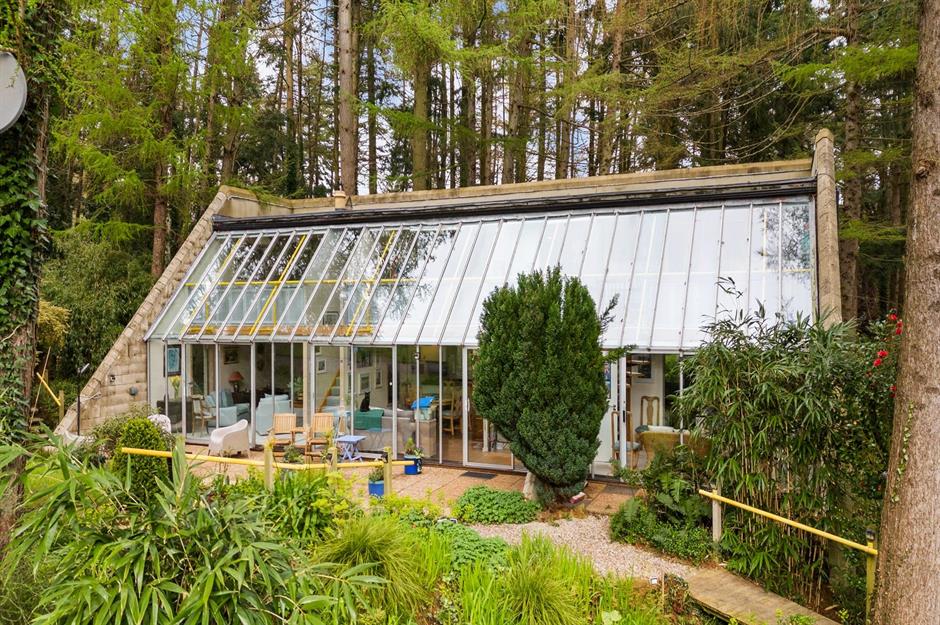
Fed up with energy bills draining your bank account? Airtight, energy-efficient, and eco-friendly, a passive home could help banish costly outgoings for good.
The first Passive House, or Passivhaus, was designed by Dr Wolfgang Feist in 1991 and built in Darmstadt, Germany. Crafted from a genius, prefabricated system, these homes achieve thermal comfort with minimal heating and cooling, thanks to insulation, airtightness, glazing, and ventilation.
Click or scroll on to step inside these stunning sustainable residences...
Cantilever House, Dunedin, New Zealand
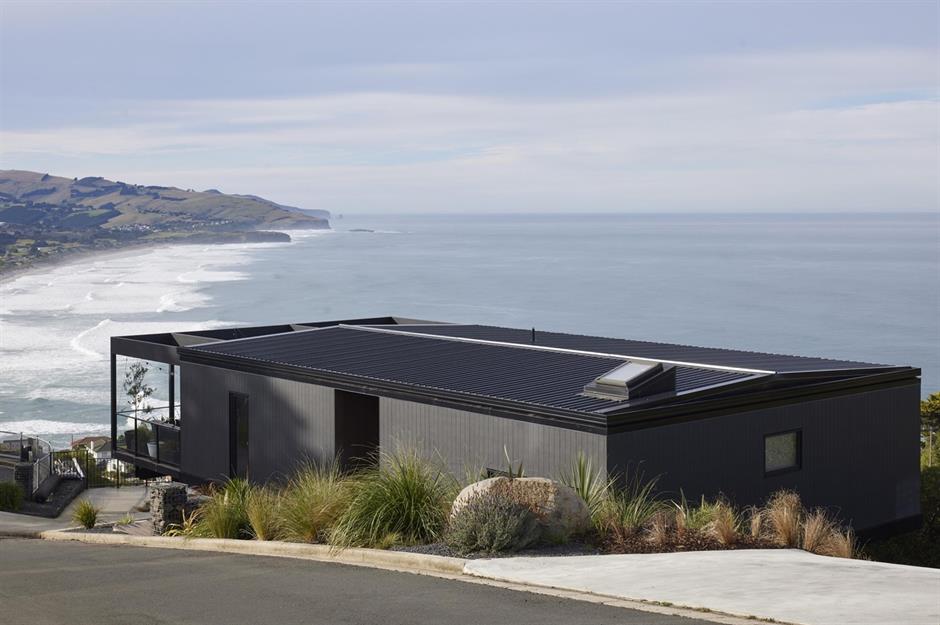
Completed in 2020, Cantilever House is a certified Passive House located on a steep site overlooking St Clair Beach in Dunedin, New Zealand.
The home was born out of one family's desire to live in a healthy, comfortable, and energy-efficient residence after they spent time staying in an eco home while visiting the UK.
Cantilever House: cubic design
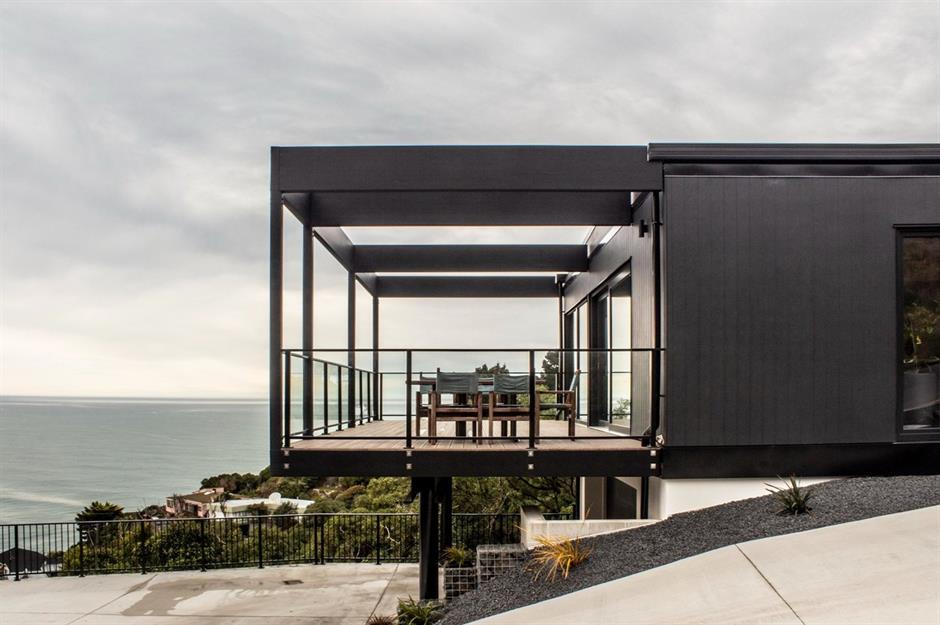
For the job, they called in the architects at Architype, asking for a modern home that made the most of those remarkable coastal views. The site presented a unique set of challenges during the design phase. The architects needed to craft something that faced the ocean, while harnessing solar gains from the north and providing vehicle access.
All this while navigating a steeply sloping site close to a road. The result is a modern black pavilion, set on stilt-like legs to cantilever part of the home over the challenging, uneven terrain.
Cantilever House: ocean views
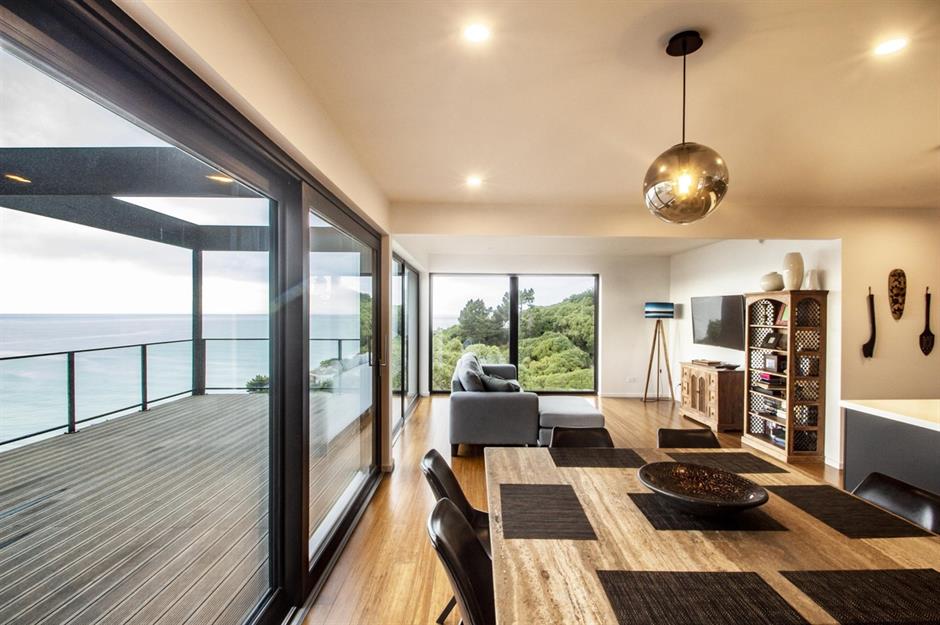
The cantilevered design not only frames unobstructed views but also minimises the impact the home has on the surrounding environment. The cube-like structure is fairly discrete from the street, to address privacy concerns and sun exposure.
To achieve this, the architects strategically raised the house off the ground, as high as they could, and created a sunny, east-facing outdoor terrace, incorporating solar shading to create a private yet sun-soaked outdoor living space.
Cantilever House: mid-century design elements
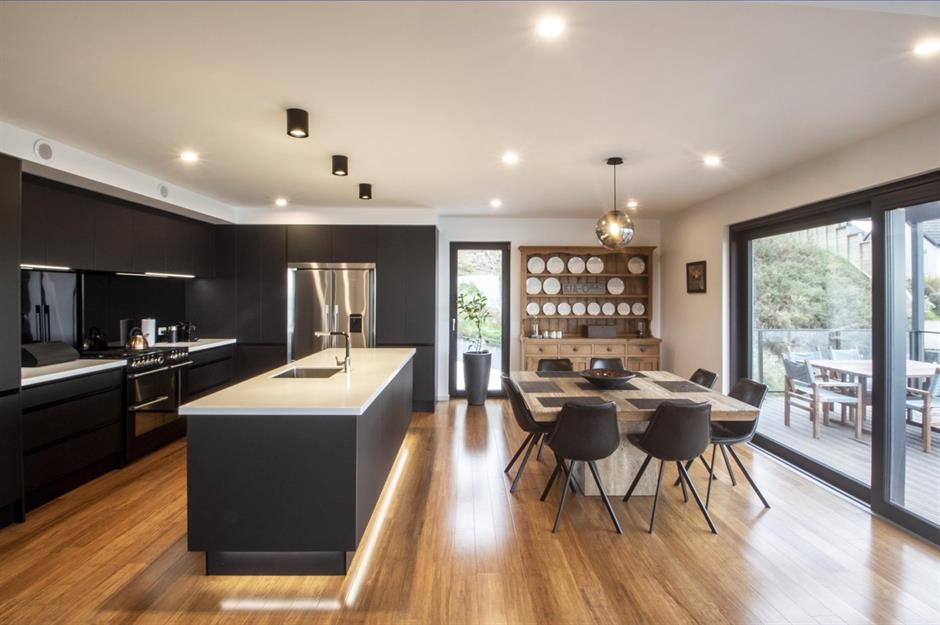
With a compact thermal envelope, the certified Passive House boasts a maximum heating demand of 15kW per square metre per year. As for rooms, there’s a lovely open-plan layout with a lounge, dining area, and kitchen, as well as four bedrooms.
The home embodies mid-century modern design elements, including exposed rafters, a low roof profile, an abundance of natural wood, and extensive glass.
The Greenhouse Residence, County Wicklow, Ireland
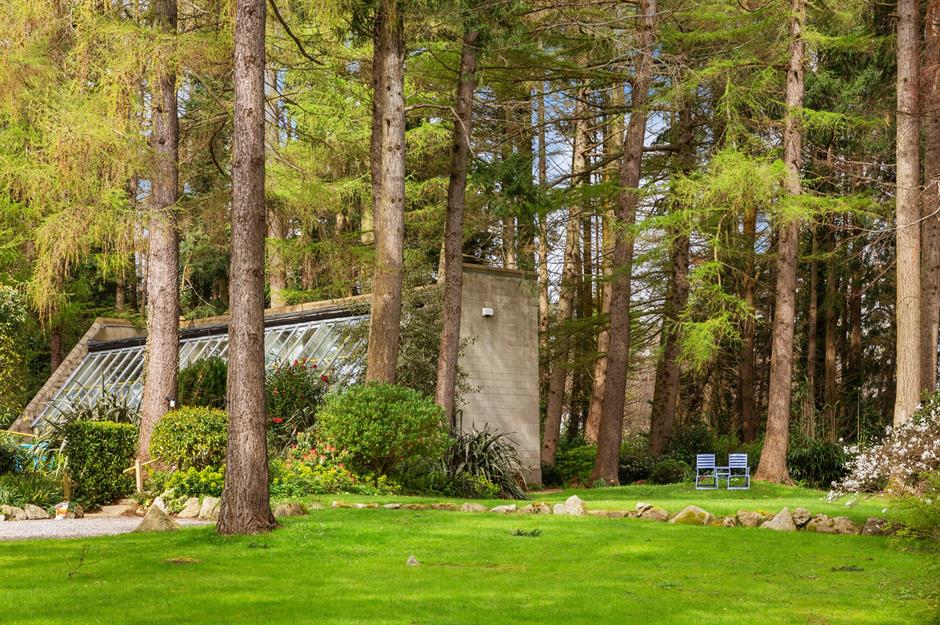
Known as The Greenhouse Residence, this timeless glass house is a fine example of sustainable design.
Located in Kilcroney, Ireland, the passive solar home was designed in 1976 by renowned architect, Derek Kilfeather, to be highly energy-efficient, light-filled, and perfectly integrated with the surrounding natural environment.
The Greenhouse Residence: swathes of glass
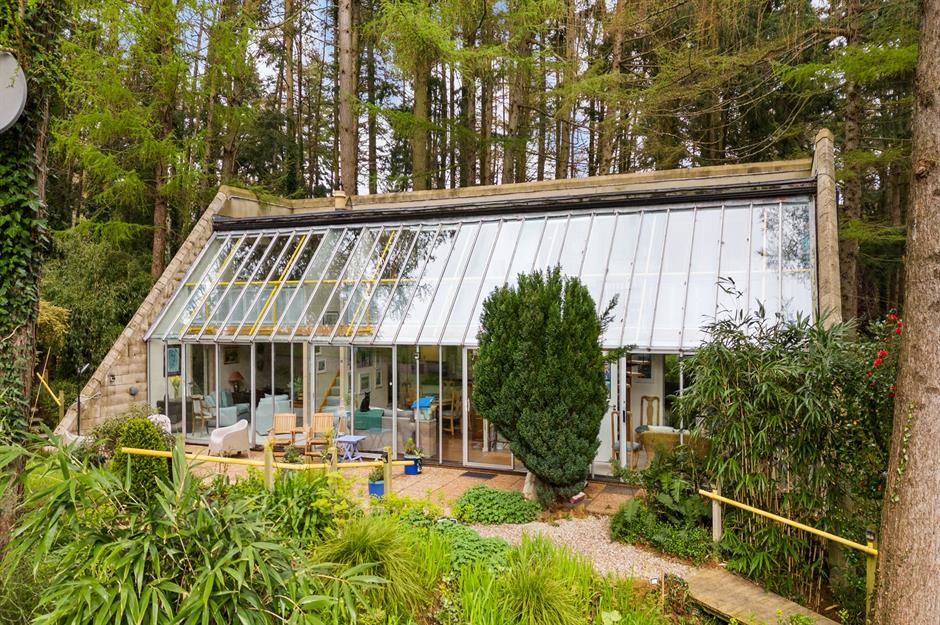
Key to its design is the home’s fully glazed southern elevation, which floods the interior with natural light and also serves as a passive heating system, reducing the need for an artificial energy source.
That means the sun’s rays keep the property warm in winter, while its high levels of insulation help to retain the heat.
The Greenhouse Residence: rustic charm

Inside, the 1,700-square-foot (157sqm) home has a flexible layout, with a free-flowing, open-plan design. There’s a spacious kitchen and dining room, a lounge with a wood-burning stove, and flexible bedroom and office spaces that can easily be reconfigured.
Cosy and chic, the property features rustic timber beams, as well as exposed structural elements, painted bright canary yellow.
The Greenhouse Residence: splashes of colour
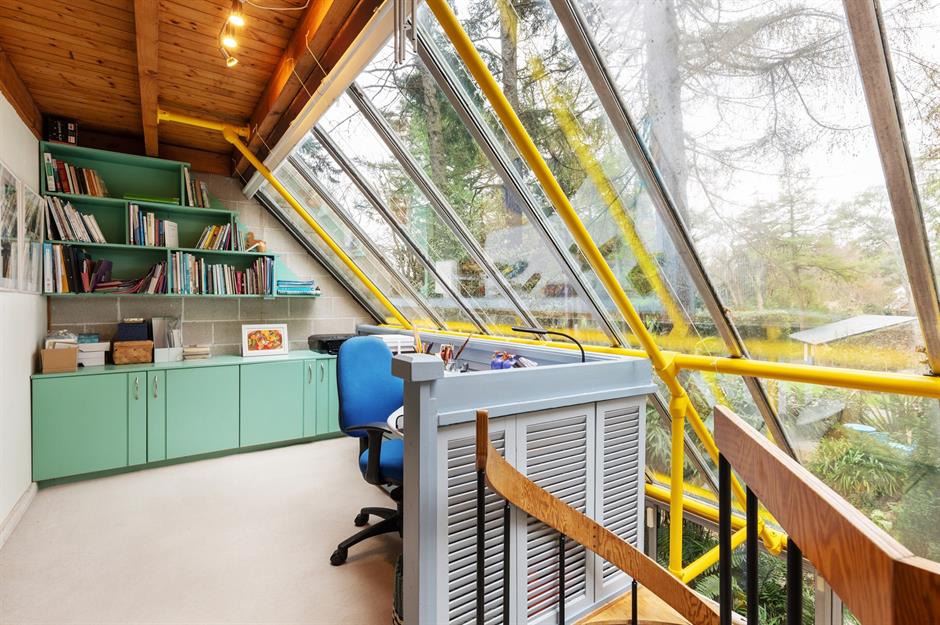
What’s more, the house has a kerosene condensing boiler with ducted hot air heating, ensuring comfort while reducing energy consumption.
Outside, there are 1.3 acres (0.5ha) of mature woodland, with stunning views of Sugarloaf Mountain, a colourful garden, and a gentle stream.
Previously for sale with Colliers Dublin and Luxury Portfolio, the house was priced at €1.2 million, which equates to £1 million ($1.4m).
Casa MM, Mallorca, Spain
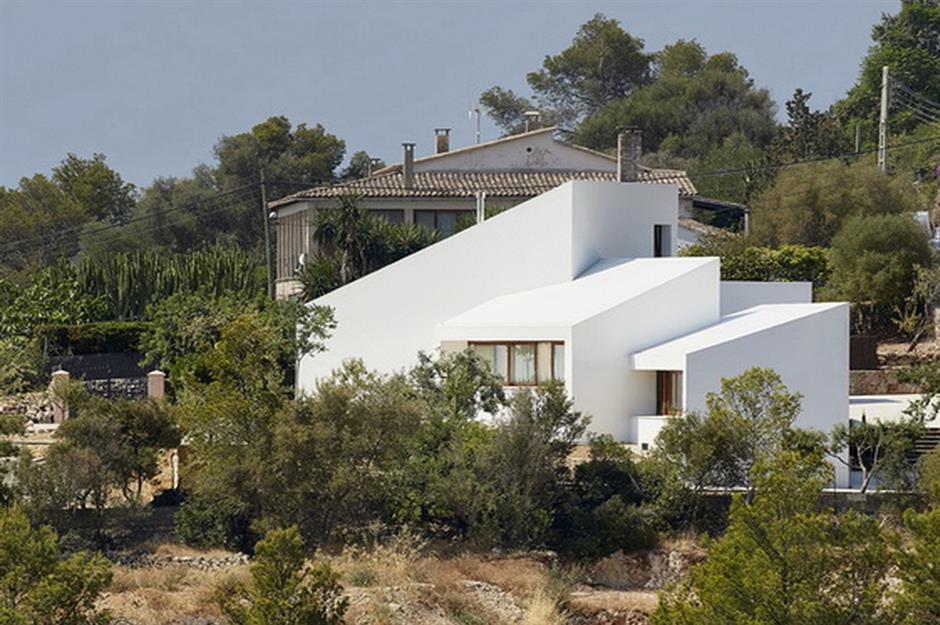
Located on the Spanish island of Mallorca, this marvellous house was designed to have maximum energy efficiency. It was positioned and crafted to make the most of the solar orientation, the view and the plot's sloping ground.
Designed by the team at OHLAB, the property is formed from four boxes, which house the kitchen, living-dining area, main bedroom, and guest bedrooms. The spaces can be used together or independently, resulting in an ultra-flexible interior.
Casa MM: heat reflecting façade
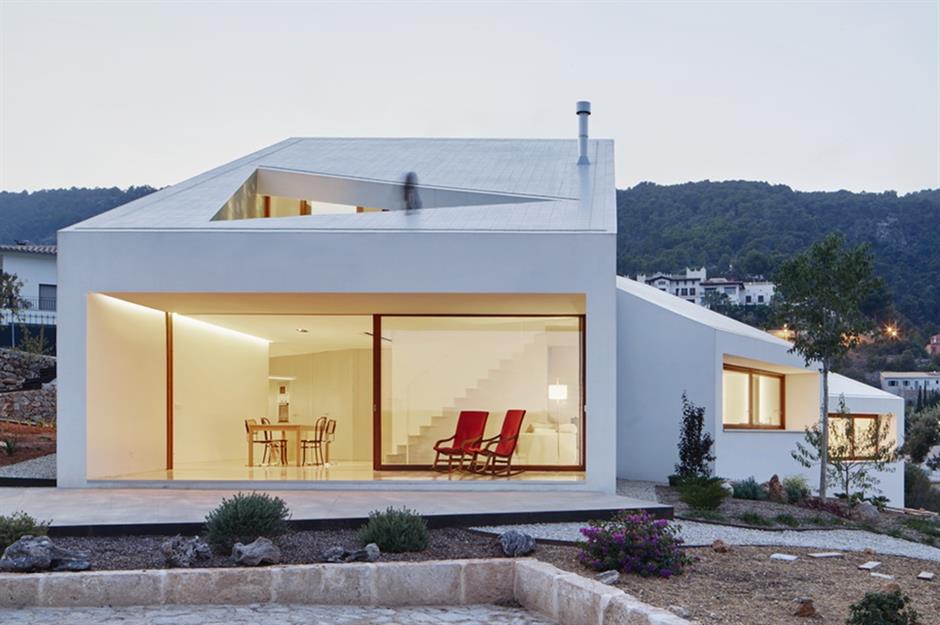
Designed to meet Passivhaus standards, a rigorous thermal study was undertaken to ensure an optimal heat input, maximising it in winter and minimising it in summer, to create a comfortable internal atmosphere all year round.
Each box has been placed to capture the best possible view, with huge windows or floor-to-ceiling sliding doors. The bedrooms face east, capturing the garden and Bellver Castle; the living and dining room face southeast towards the sea, and the kitchen faces south, with views of the vegetable garden.
The glazing not only provides scenic vistas, but also cross ventilation for natural airflow. The south section has also been recessed slightly to let the sun enter the home during the winter and block it in summer.
Casa MM: flexible floor plan
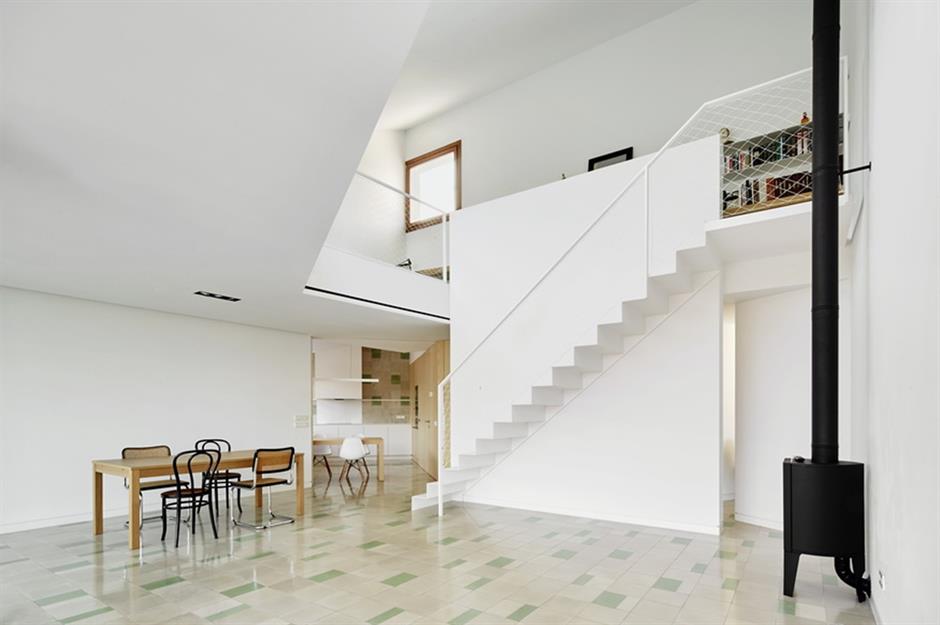
The façade features an exterior insulation system that’s 0.5 feet (15cm) thick and protected joints to completely avoid any thermal bridges, meaning there’s no opportunity for heat to escape or cold air to enter.
The home also has a heat exchanger that reuses air, wasting no energy and utilising the heat generated during showering or cooking to warm the internal rooms. There’s underfloor heating, too, and hot water is warmed almost entirely by solar panels.
Casa MM: natural accents
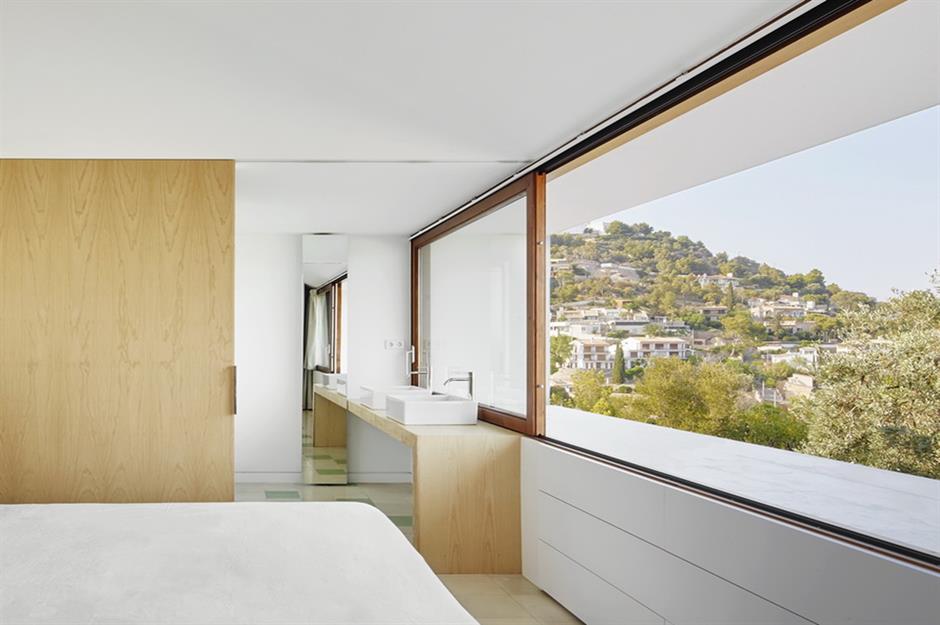
Despite Mallorca’s hot climate, no cooling is necessary, thanks to the home’s immaculate construction. Other green credentials include the home’s rooftop rainwater collection system.
As for design, the property is sleek and minimalist, with an all-white colour palette, complemented by accents of natural wood. The main living space has a soaring double-height ceiling, while the mezzanine loft office connects to a lovely exterior balcony.
Studio Zempow, Brandenburg, Germany
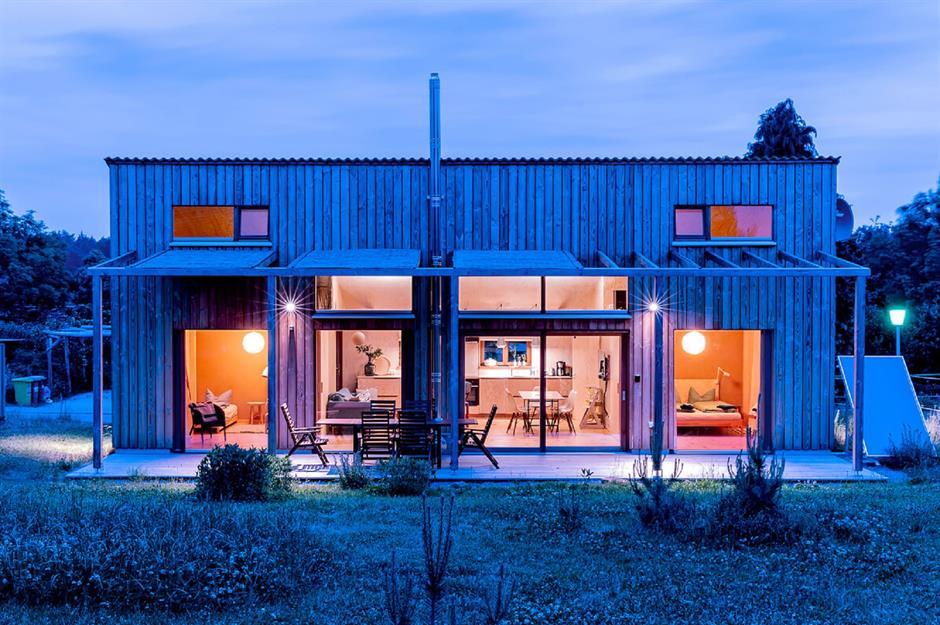
Located in Germany, where Dr Wolfgang Feist built the first passive house some three decades ago, this property continues the country's legacy of innovative building.
Known as Studio Zempow, the modern cottage is far more than an eco home; it's wheelchair accessible, allergy-friendly, and made from natural building materials – some of which were recycled.
Studio Zempow: eco building materials
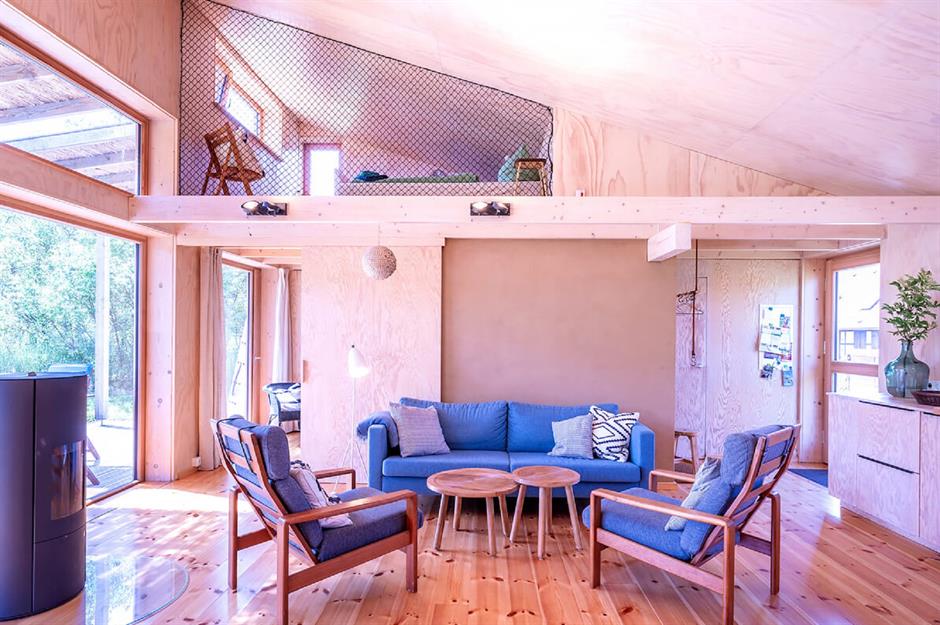
The woodland home was designed by architect Arnold Dransfeld, a pioneer of ecological construction, and built using a combination of clay, hemp, and wood.
There's no insulation in the floors, but rather a limestone gravel foundation that allows the house to breathe, while the clay walls regulate the interior humidity, keeping the house at the perfect temperature all year round. Inside, you'll find stripped-back living spaces, finished with natural wood and large sheets of glass.
Studio Zempow: open-plan spaces
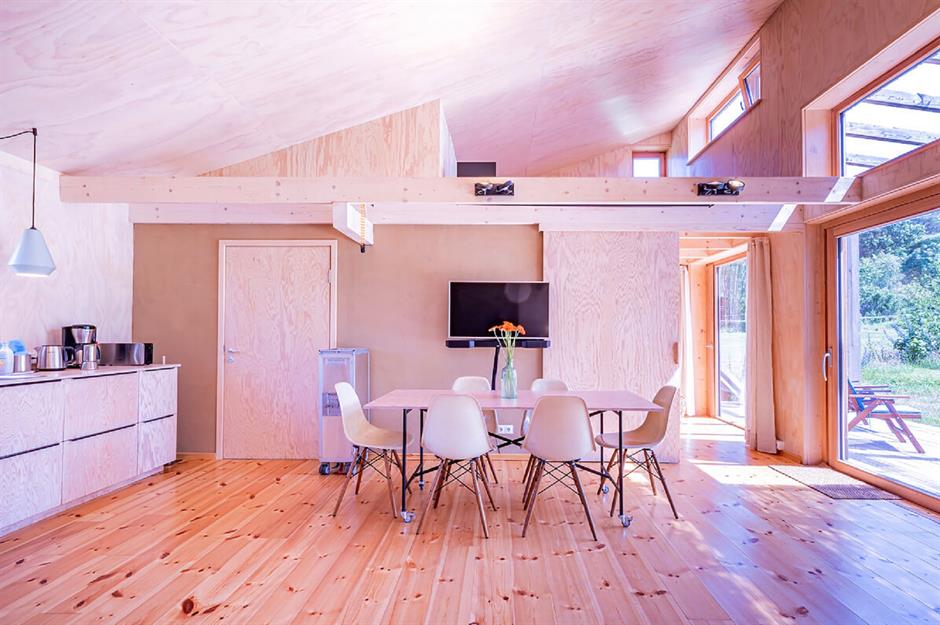
The interior design, undertaken by Meyer+Harre, really allows the home's natural surroundings to take centre stage. Far from being a vacant box, the rooms are light-filled and cosy.
There's a large, open-plan room with a space-savvy kitchen, dining space, and lounge, as well as three bedrooms, two of which are positioned on snug loft levels.
Studio Zempow: handmade elements
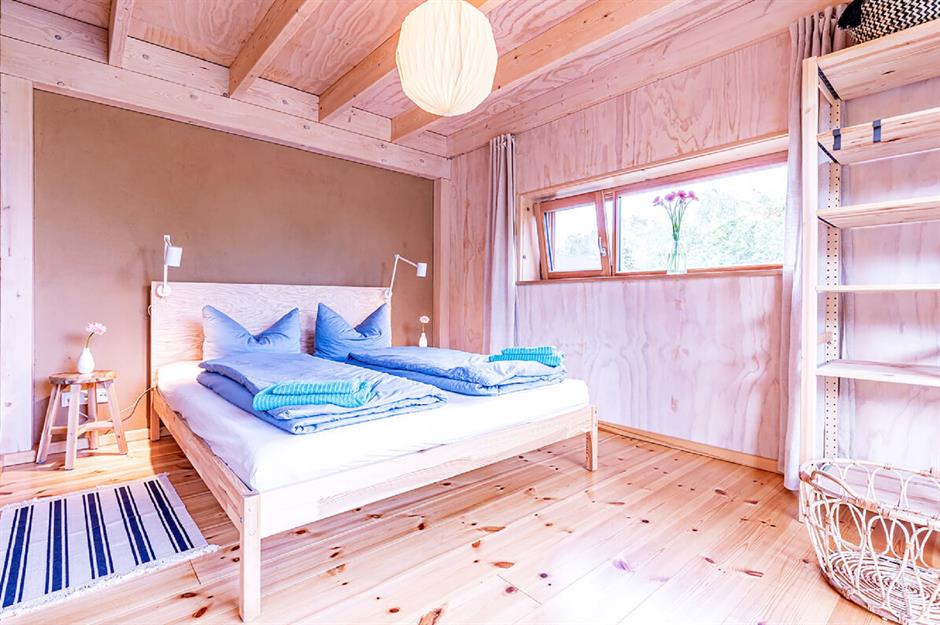
A set of timber sliding doors leads through to the master suite, finished with a beamed ceiling and a handmade bed. Outside, there's a large garden and a south-facing terrace, where evening drinks and stargazing can be enjoyed.
If you fancy spending the night here, then head over to Airbnb to book your next adventure.
Green Retreat, Victoria, Australia
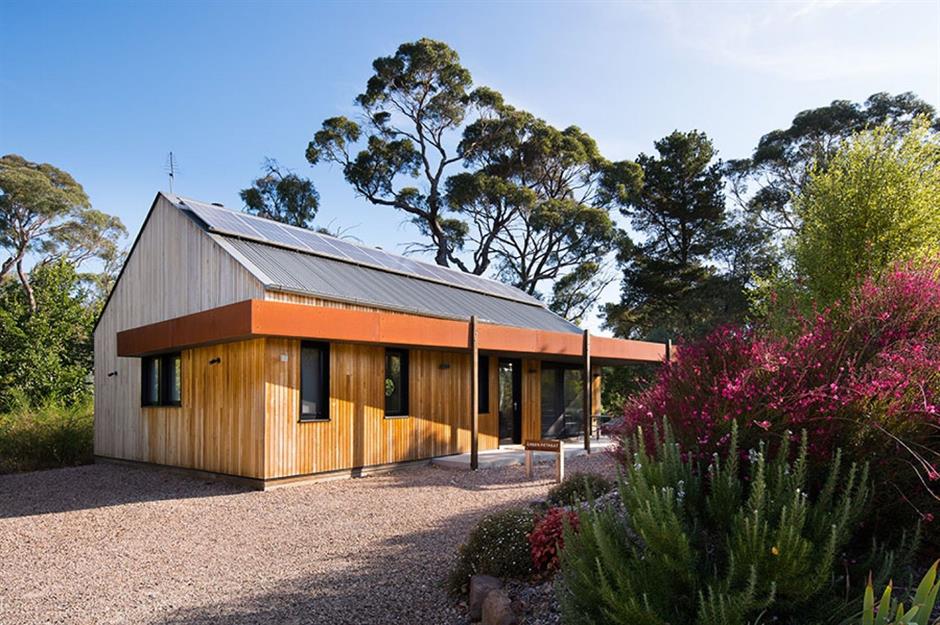
Aptly named the Green Retreat, this certified Passive House is nestled on a gorgeous plot in the town of Hepburn Springs in southeast Australia.
Constructed from silvertop ash timber cladding, the wonderful wooden house was finished with highly efficient triple-glazed German windows and a smart climate control system, resulting in a nine-star energy rating and a blissful internal environment all year round.
Green Retreat: vaulted ceilings

The home's striking timber-clad façade is complemented by a spacious, light-filled interior with stripped-back decorations.
The property's vaulted ceilings, extensive glazing, polished concrete floors, crisp white walls, and metallic colour palette add to its appeal.
Green Retreat: chic interior design
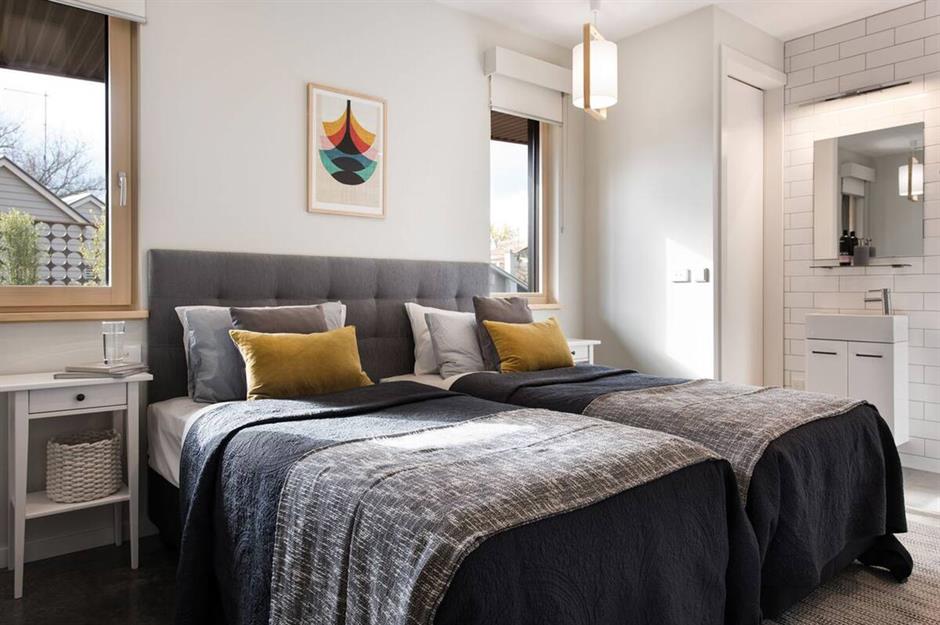
The floor plan includes a lounge, dining space, kitchen, two bedrooms, and two bathrooms.
The property even featured on the Australian holiday and travel television series, Postcards.
Green Retreat: tranquil surroundings
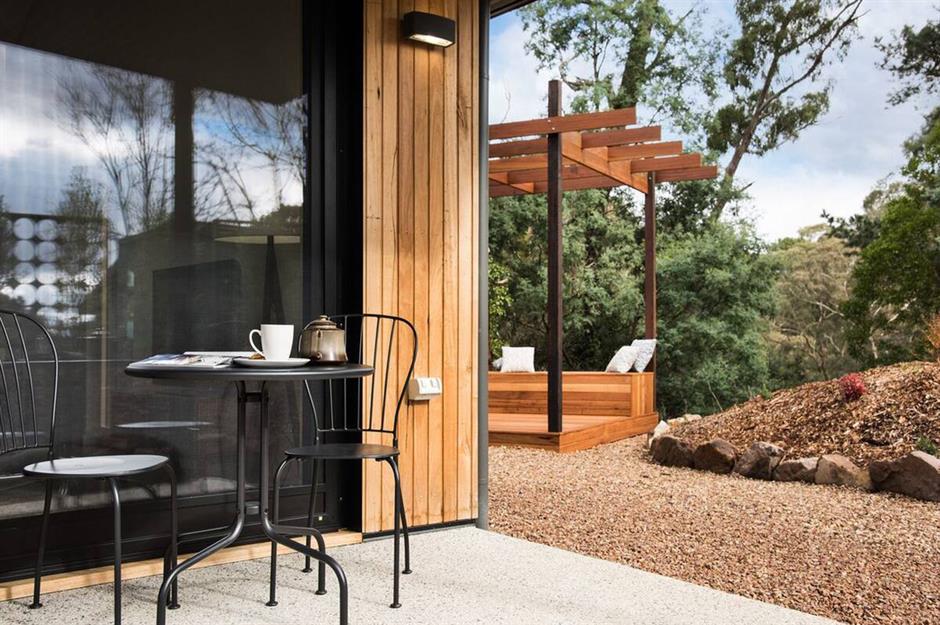
Outside, there's a beautiful pergola for relaxing mornings or afternoons, soaking in the surrounding nature.
If you fancy testing out a Passive House before committing to one, then you can spend the night in this stunning eco home via Airbnb.
Park City Tree Haus, Utah, USA
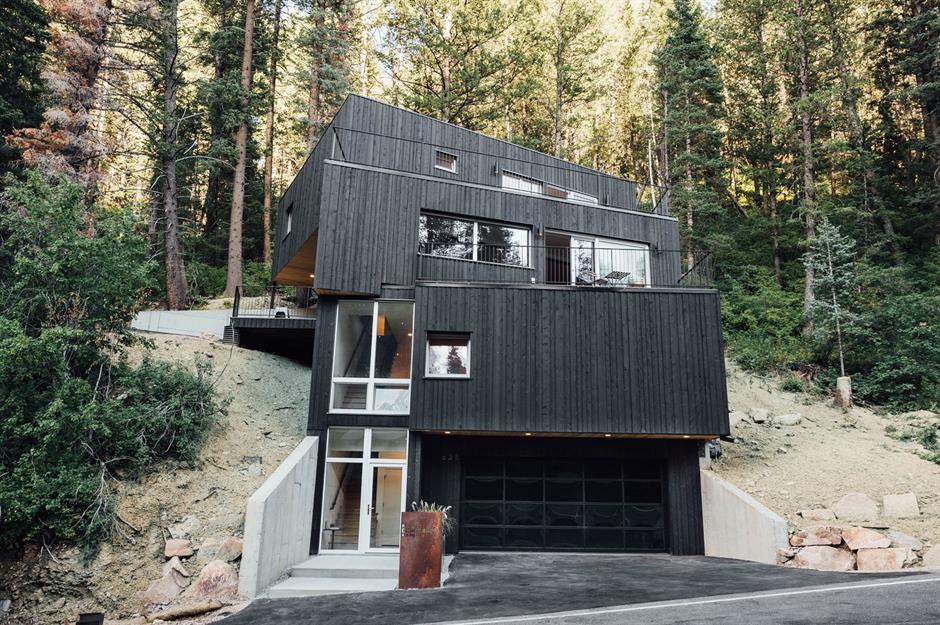
Nestled into a slope in the middle of a forest, this elegant home, clad in blackened cedar planks, is at one with its woodland surroundings.
Named the Tree Haus, the eco-friendly project was designed and built by architect Chris Price of KLIMA Architecture.
Park City TreeHaus: angled elevations
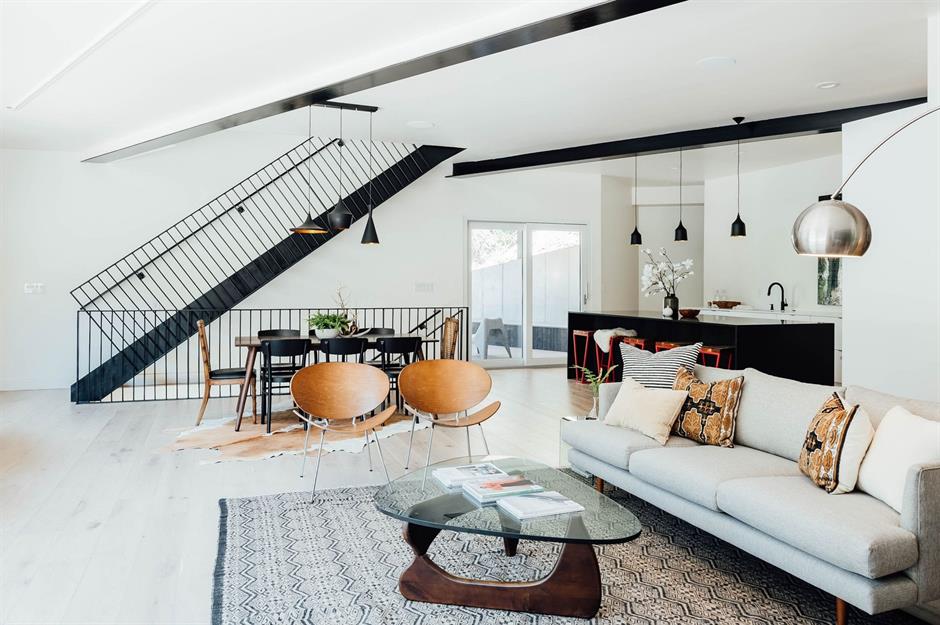
Located at an elevation of 7,000 feet (2,134m) near the Utah ski resort of Park City, the unique woodland home was designed to meet strict Passive House standards.
The property's staggered storeys cascade down the hillside, with each level orientated at a slightly different angle, creating a sheltered terrace to the side of the home.
Park City TreeHaus: monochrome interiors
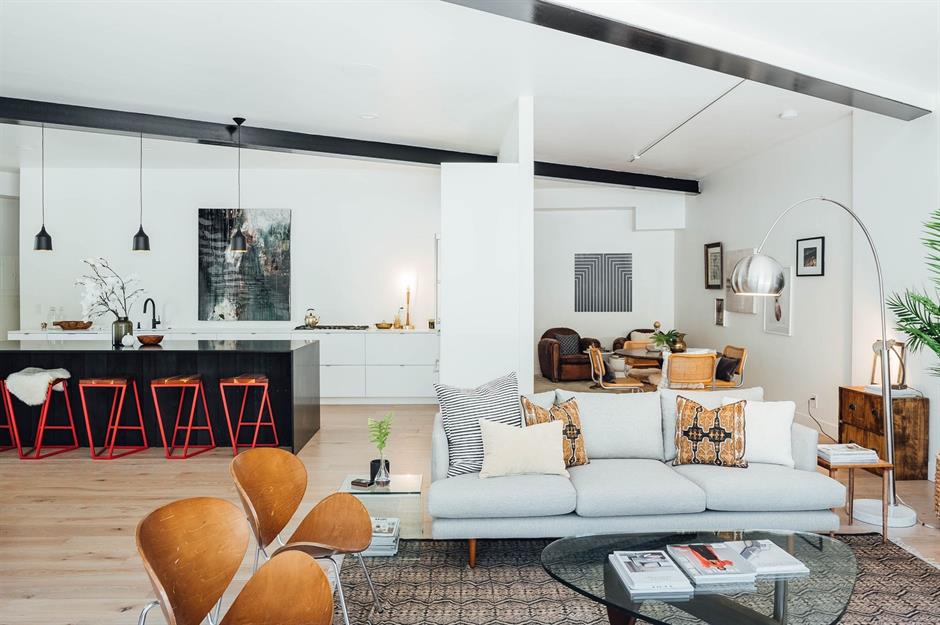
Inside, black beams and metalwork contrast with luminous white walls and pale wood floors.
The thick exterior cladding offers an impressive level of thermal insulation, keeping the eco home's interior warm and cosy in the bitter winter months.
Park City TreeHaus: modern living zones
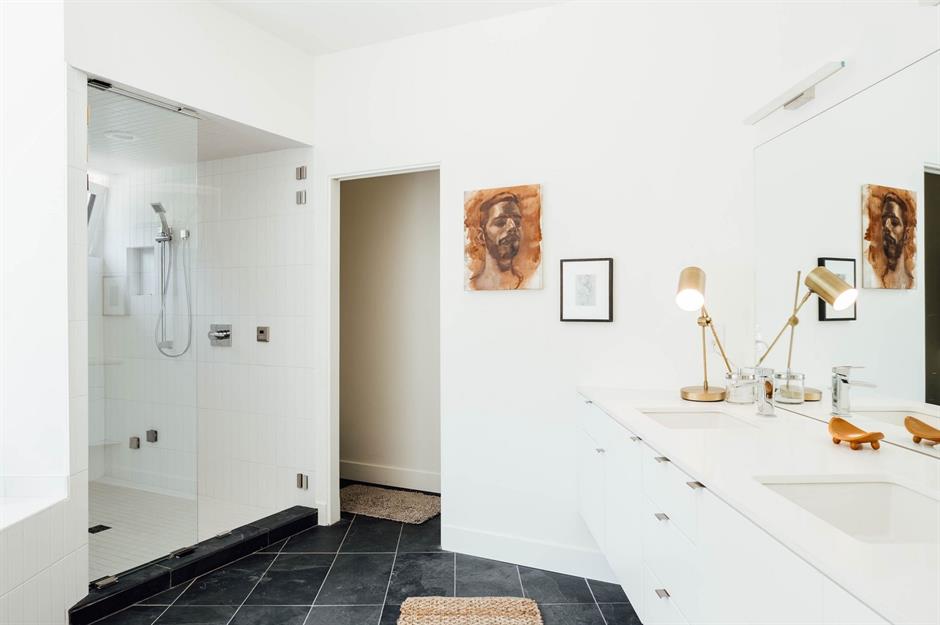
The airtight retreat offers an array of stylish modern living zones, from the sociable open-plan living area to the balconies that flank the home's numerous levels.
There's plenty of space for the whole family to stretch out, too, with four sizeable bedrooms located across the first and fourth floors.
A House for All Seasons, Victoria, Australia
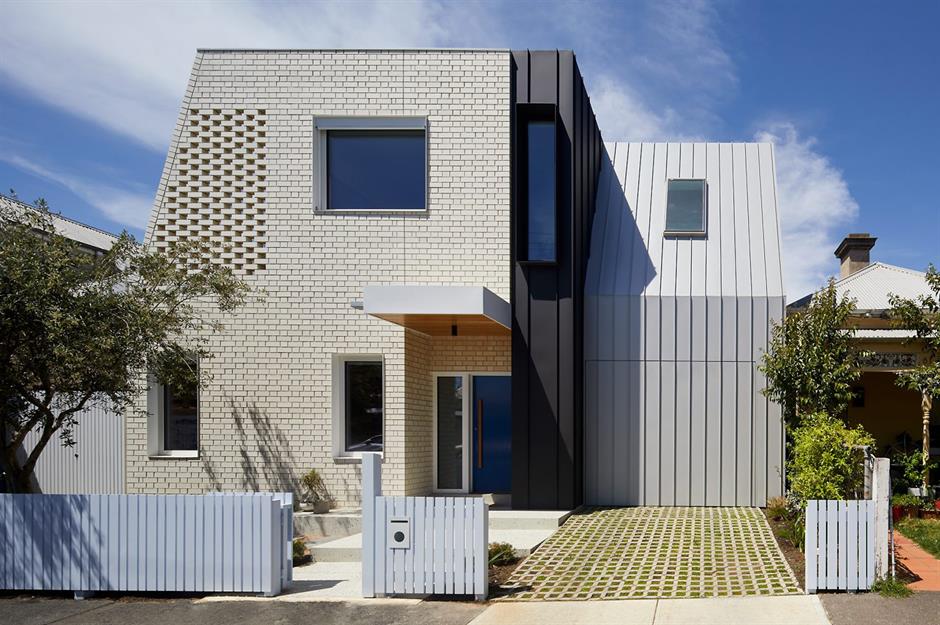
Located in inner-city Melbourne, this contemporary family home has been designed with energy efficiency in mind.
Built with an airtight, passive design, everything from the orientation of the windows to the durability of the construction materials has been meticulously planned.
A House for All Seasons: flexible spaces
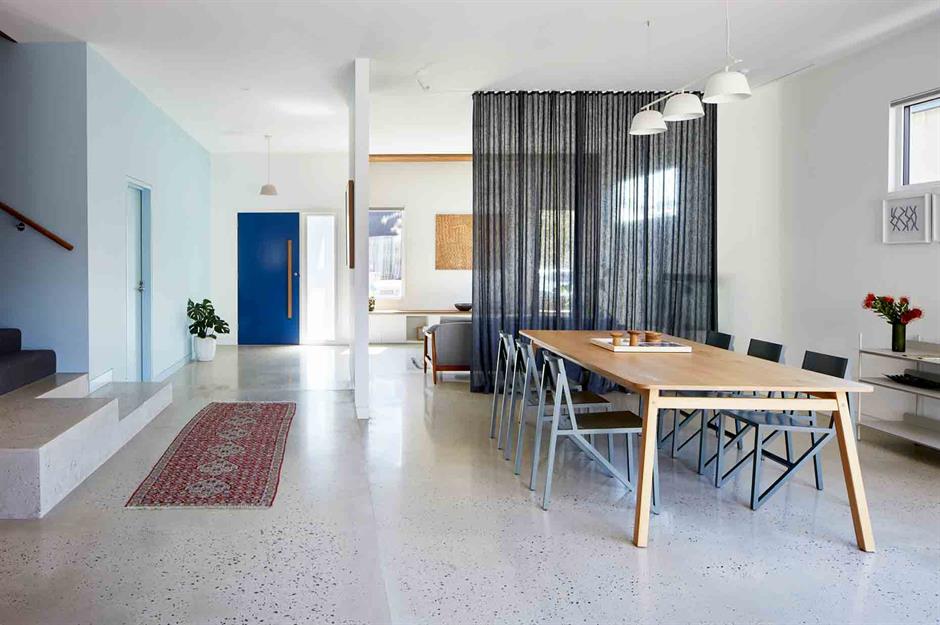
Designed by Polystudio, the contemporary home was also created to stand the test of time – the architects wanted the property to meet the changing needs of a young family, with an array of multipurpose rooms.
In the open-plan living space, a partition curtain offers a flexible way of dividing the dining area from the lounge, while still allowing light to filter through.
A House for All Seasons: considered design details
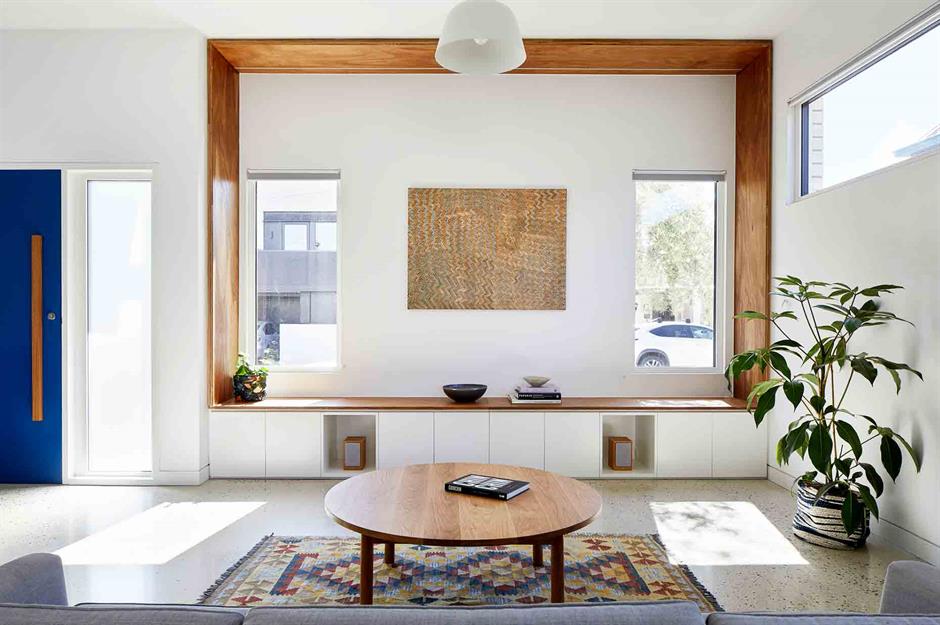
Across the interior, warm wood sits alongside crisp white surfaces, punctuated by vibrant pops of colour.
Large picture windows draw light and heat into the stylish living accommodation, while the energy-efficient structure moderates the temperature for a warm, comfortable environment.
A House for All Seasons: urban oasis
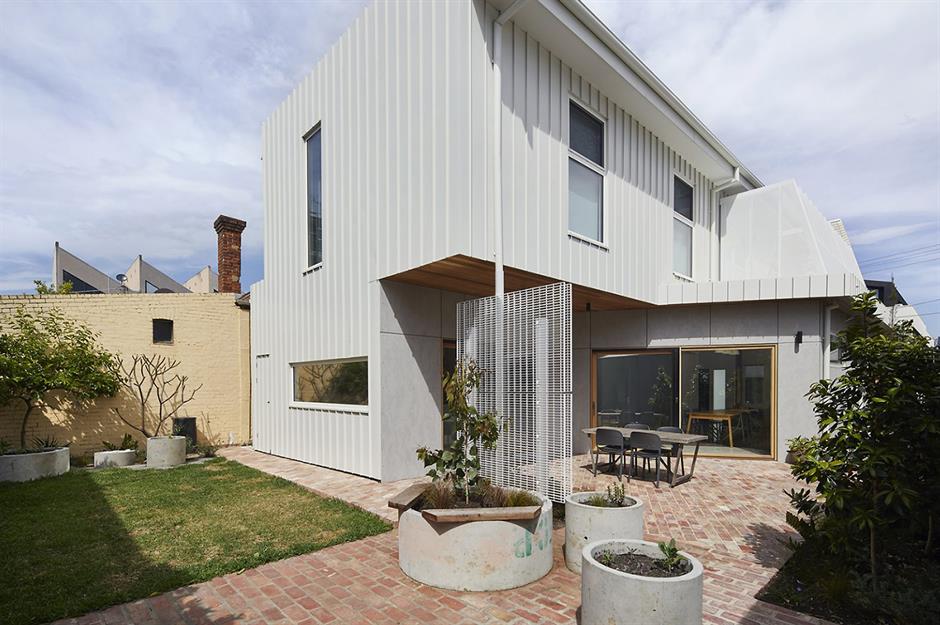
Outside, a brick terrace, accessed by sliding glass doors, offers the ideal place for dinner parties to spill out in the balmy Melbourne summers.
A slatted panel shields diners from direct sunlight, while concrete planters and foliage create an urban oasis in the midst of the city.
Outhouse, Gloucestershire, UK
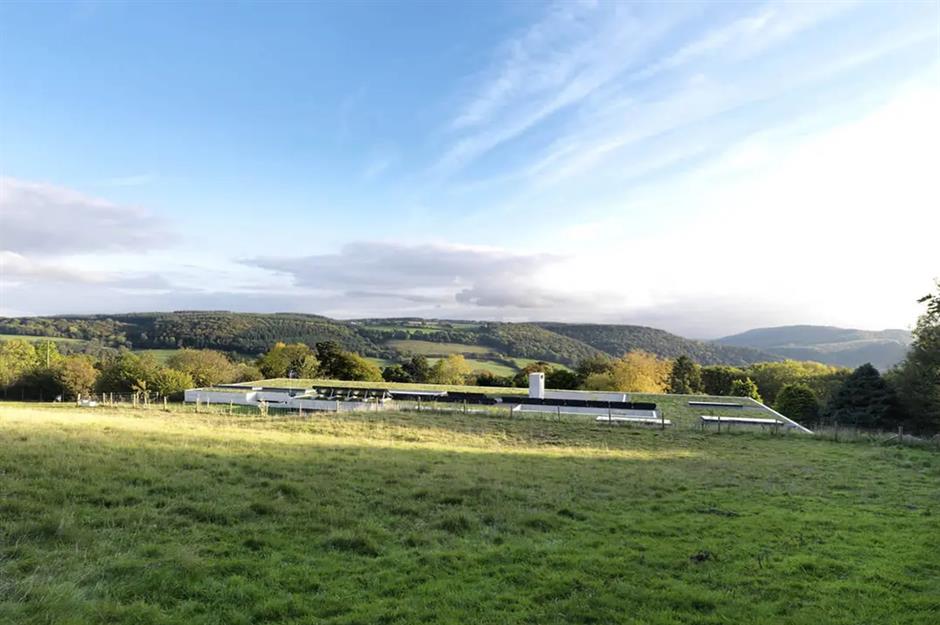
Almost invisible from certain viewpoints and evoking the lines of classic brutalist architecture, this angular concrete home excels in both form and function.
Shortlisted for RIBA's House of the Year in 2016, the airtight home is found in the Forest of Dean in Gloucestershire, England, and comes with an impressive array of eco-credentials.
Outhouse: brutalist architecture
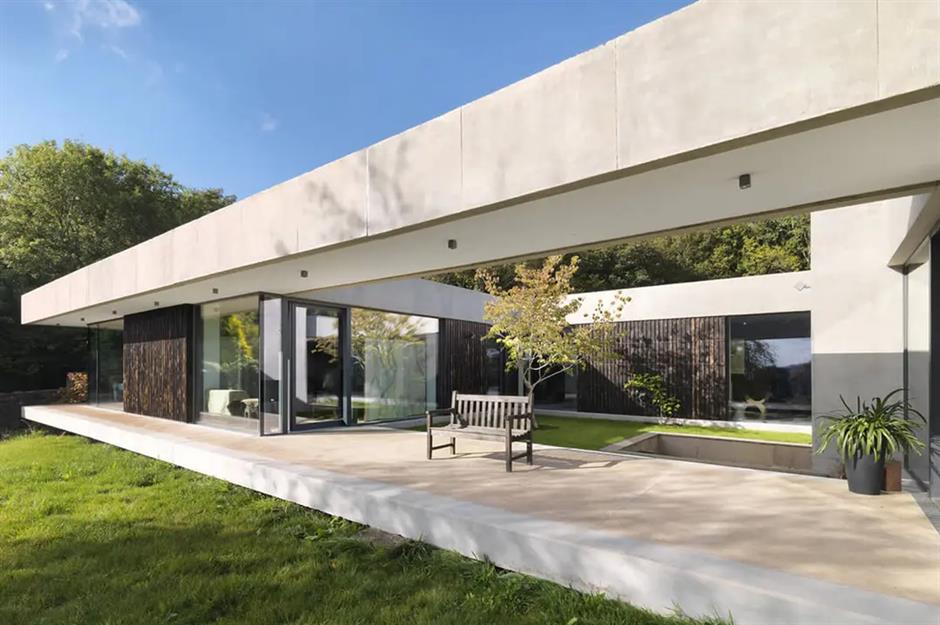
Situated on a sloping plot, the 5,000-square-foot (465sqm) property was designed by the team at Loyn + Co Architects and is surprisingly sleek and unobtrusive, hovering just above the rural landscape.
A grass roof helps to insulate the structure, blurring the line between the residence and the surrounding meadows, while adjacent solar panels generate electricity for the home.
Outhouse: expansive living areas
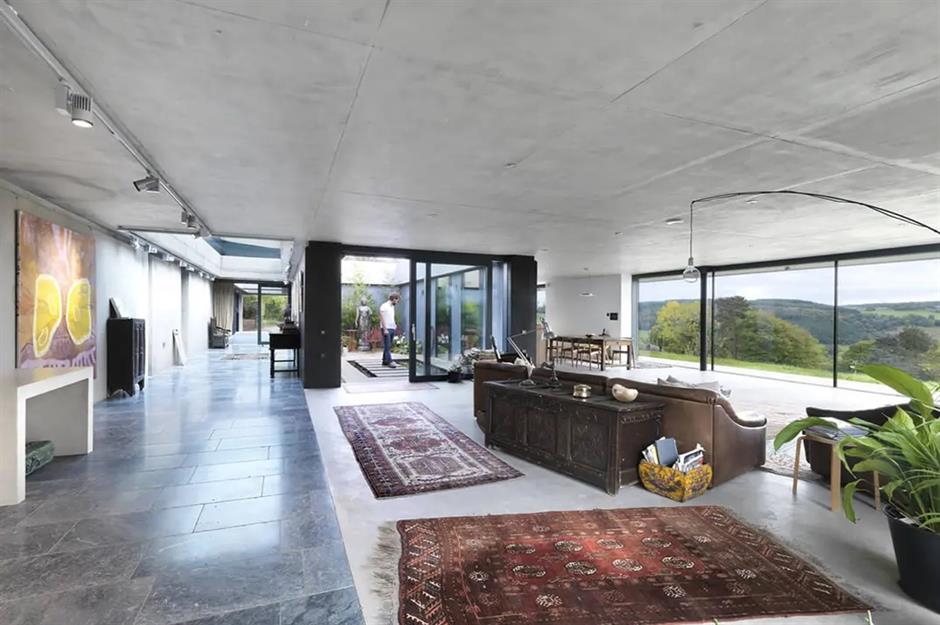
Expanses of glass frame the rolling hills, drawing in light and solar gains to warm the eclectic living spaces.
The property recorded an impressive airtightness level of 0.49 h-1@50Pa, which is well within the threshold for Passive House classification, and an EPC (energy certificate) rating of 96 out of 100.
Outhouse: countryside vistas
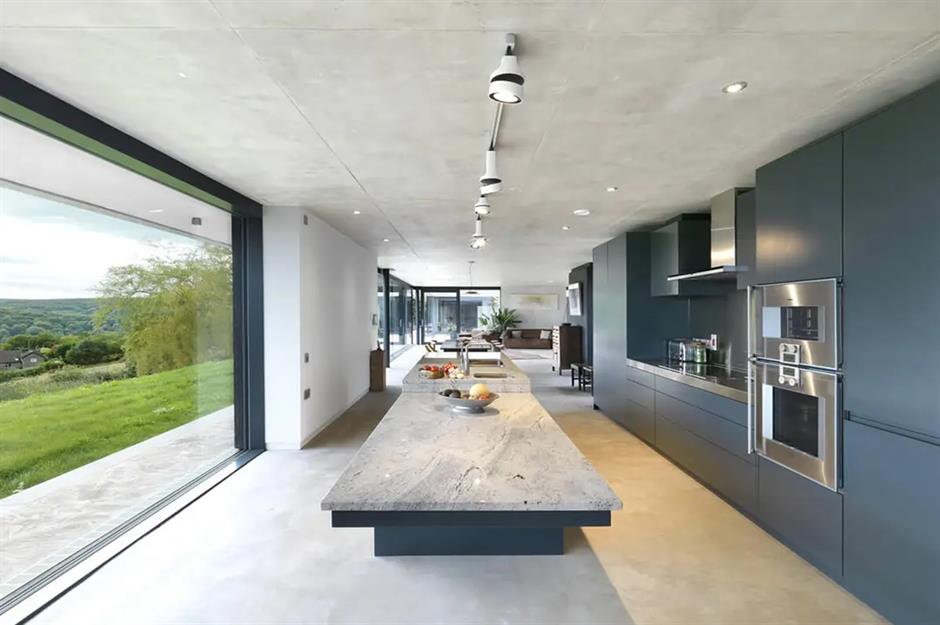
Fitted with underfloor heating and a ground source heat pump that regulates the home's temperature, the cutting-edge concrete property is as comfortable as it is stylish.
Haus Kieffer, Luxembourg
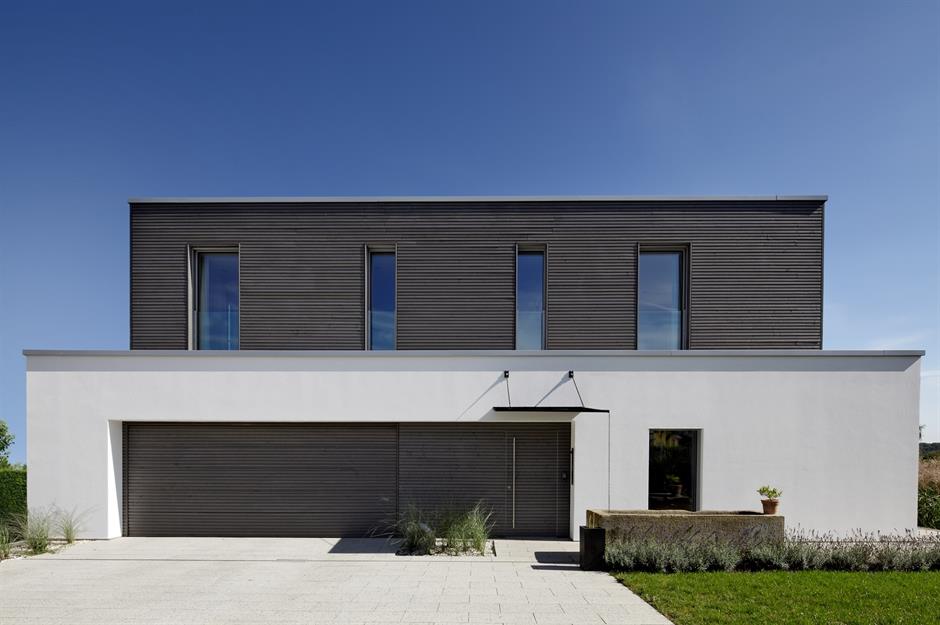
This remarkable modern home blends first-class architecture with ultimate internal comfort and climate control.
The owners wanted a sustainable timber frame house that would meet the standards of a Passive House, so they turned to the German off-site manufacturing firm Baufritz to create a bespoke, high-quality home with little to no energy bills.
Haus Kieffer: prefab perfection
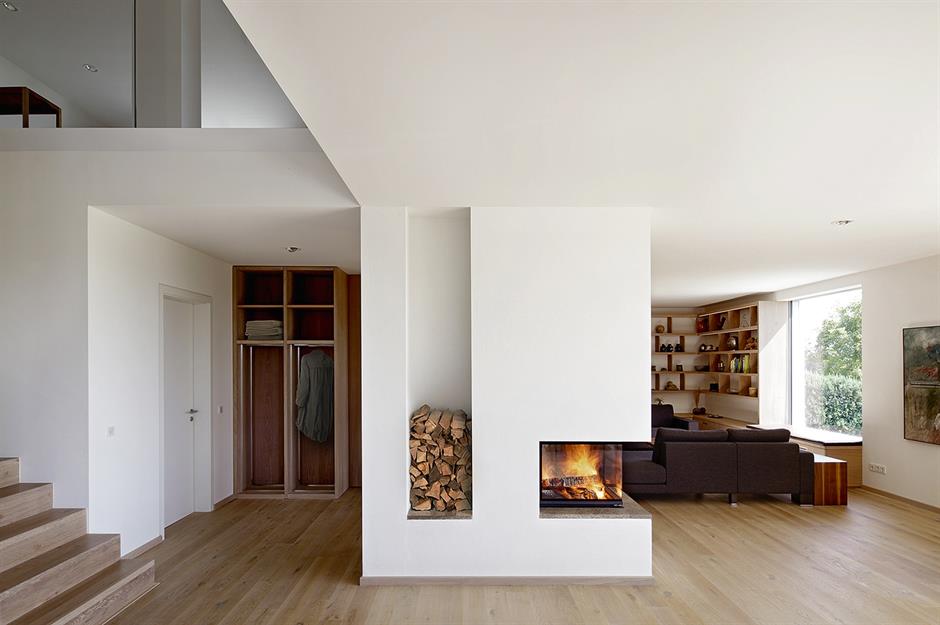
Baufritz uses timber construction to create ecological and healthy homes, combining luxury with comfort while utilising beautiful eco building materials.
Each Baufritz package home is individually designed and prefabricated at the company’s factory in Erkheim, Germany, before being transported on the back of a lorry to the plot. Some homes can be assembled in a matter of days, with most projects taking between nine and 12 months from design to completion.
A single family home similar to this one, without furniture or a kitchen, would cost from €1.8 million or £1.6 million ($2.1m).
Haus Kieffer: south-facing spaces
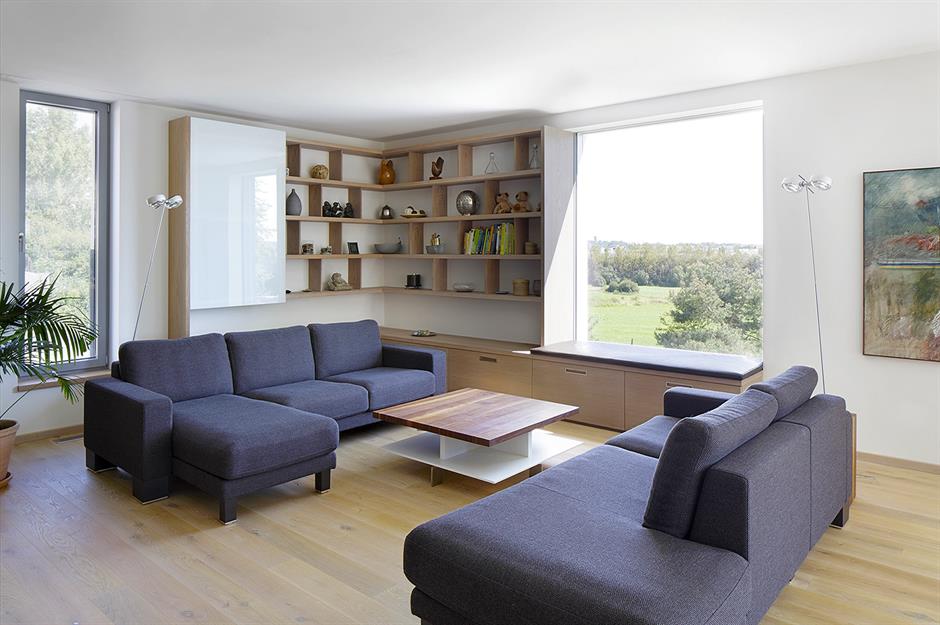
Spanning 4,112 square feet (382sqm), Haus Kieffer was designed by Baufritz architect Tom Beiler and has a bold exterior look. From the front, the home appears as a purist cube, but at the rear, it unfolds with plenty of glass. This lack of windows at the front was no accident – as few as possible were installed on the northern façade to minimise heat loss.
In addition, a double garage insulates the living area and acts as a kind of porch. To the south, the building opens to the garden on three levels and offers spectacular views.
Haus Kieffer: modular design
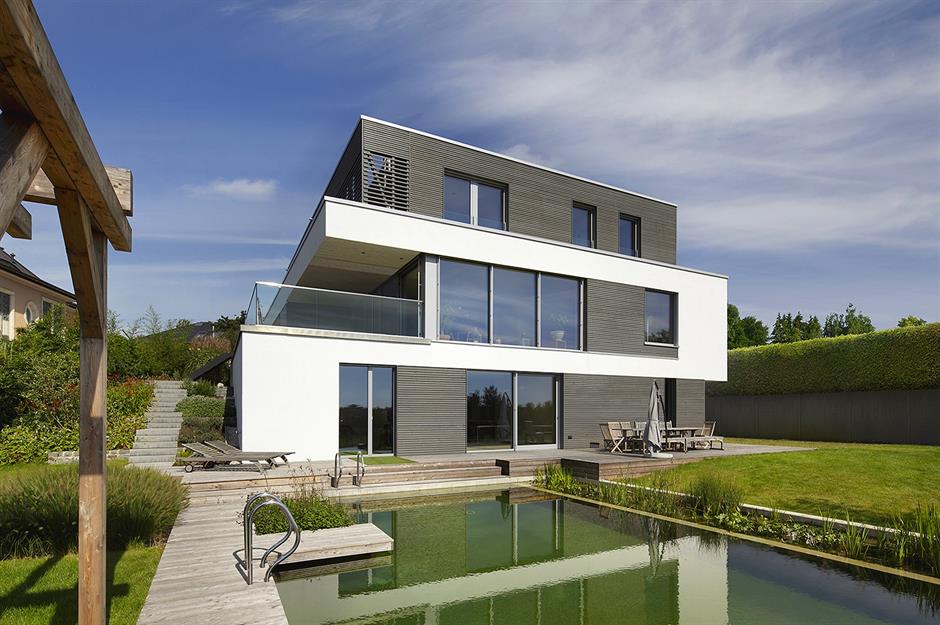
The owners also opted to incorporate plenty of materials, including organic mineral plaster and larch cladding. There’s also a 1.2-foot (37cm) thick "complete-solution wall", created from wood shavings that were either obtained in production or have originated from FSC-certified timber. This wall provides perfect thermal insulation.
As for the interior, there’s a gallery on the ground floor, while the living, dining, and kitchen area was designed as one room. Cleverly, there’s also an office in this space, but it can be separated with a sliding shelf module if required. Upstairs, you’ll find four bedrooms, including a master suite with a dressing room and bathroom.
Loved this? Check out more stunning architecture around the world
Comments
Be the first to comment
Do you want to comment on this article? You need to be signed in for this feature